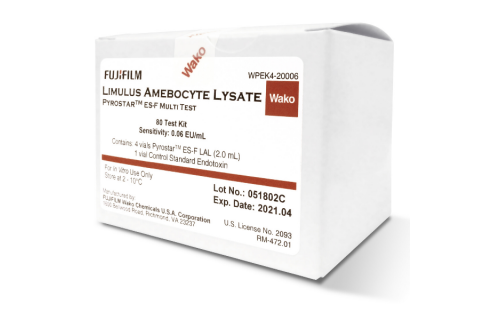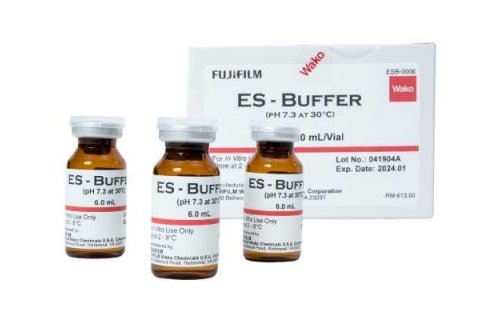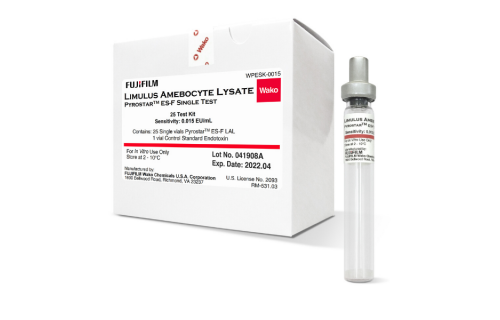The Detection of Endotoxins via the LAL Test - Gel Clot Method
Pyrogenicity may be observed in a broad range of scenarios, encompassing materials, production processes, and the administration of parenteral. Examples of products that can exhibit inherent pyrogenicity include adjuvants in vaccines and synthetic lipopeptides.
The introduction of pyrogens, such as bacterial endotoxins, into the human bloodstream can lead to symptoms such as fever, inflammation, and potentially septic shock. The outer membrane of Gram-negative bacteria is a major source of endotoxins, and such bacteria can be found almost everywhere in the environment. As a result, it is necessary to conduct regular testing for endotoxins in medical devices and pharmaceutical products meant for parenteral use. [1]
What are the methods for detecting pyrogens?
Several pyrogen detection methods include the RPT (Rabbit Pyrogen Test), MAT (Monocyte Activation Test), and LAL (Limulus Amoebocyte Lysate) assay. The LAL assay has gained widespread acceptance by regulatory bodies such as the FDA and international pharmacopoeias.
The LAL assay has been recommended by researchers as a valuable technique for determining the levels of endotoxins and bacterial load in water quality. The primary objective of the LAL assay is to diligently monitor the presence of endotoxin in the water used for sterilizing reusable medical devices in surgical procedures. This analysis has the capacity to detect even the most minute traces of the molecule, reaching levels as low as a few picograms. [2]
Among LAL methods, the gel clot method is the most commonly used. This test relies on a coagulation reaction between the endotoxin and the lysate to determine its presence or absence.
LAL Gel Clot Method
Since its approval by the FDA in the 1970s, the gel-clot LAL test has been widely embraced as the official means of detecting bacterial endotoxins. The basis of the LAL-test lies in the coagulation response of an enzyme complex obtained from horseshoe crab cells, when exposed to bacterial endotoxins..[3]
In compliance with the ANSI/AAMI ST108:2023 standard, the endotoxin level of Critical water used for reprocessing, sterilization, and rinsing must not exceed 10 EU/ml. In order to comply with this standard, monthly testing is necessary.[4]
Among the various LAL methods, the most straightforward approach is the utilization of PYROSTAR™ ES-F single-test and multi-test kits in the LAL gel-clot method, which offers sensitivities ranging from approximately 0.015 to 0.25 EU/mL. This tool plays a vital role in enabling healthcare facilities, pharmaceutical companies, and other industries to confirm the absence of endotoxins in their products and environments.[5]
The manufacturing procedures of medical devices are required to strictly adhere to the specified controls set by the Association for the Advancement of Medical Instrumentation (AAMI). Pyrogenicity may arise from the potential release of additional chemicals or materials by medical devices, such as wound dressing materials or alginate microcapsules. As these devices directly interact with blood and lymph, it is crucial to confirm their pyrogen-free nature. When it comes to the detection of pyrogens, the LAL test is a commonly utilized method.
Reference:
- Mehmood, Y., What Is Limulus Amebocyte Lysate (LAL) and Its Applicability in Endotoxin Quantification of Pharma Products. 2019.
- Daneshian, M., et al., High sensitivity pyrogen testing in water and dialysis solutions. J Immunol Methods, 2008. 336(1): p. 64-70.
- Meisel, J., Determination of Pyrogens: Comparison of Different Methods. Altex, 1995. 12(2): p. 89-92.
- Vockley, M.J.J.o.C.E., AAMI Publishes First National Standard on Water Quality for Medical Device Processing. 2024. 49(1): p. 30-31.
- Dobrovolskaia, M.A., et al., Ambiguities in applying traditional Limulus amebocyte lysate tests to quantify endotoxin in nanoparticle formulations. Nanomedicine (Lond), 2010. 5(4): p. 555-62.






